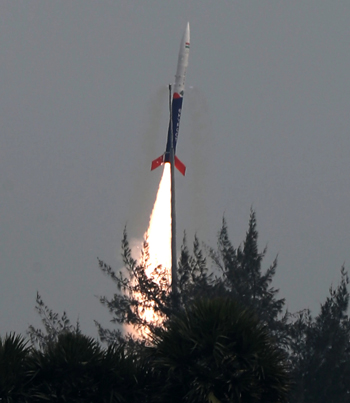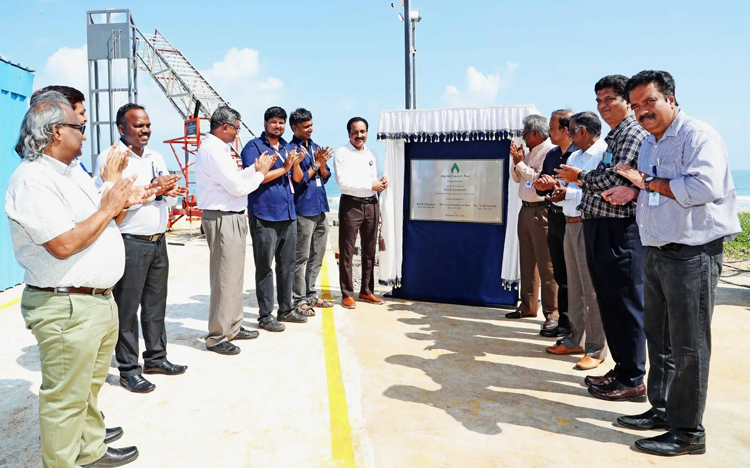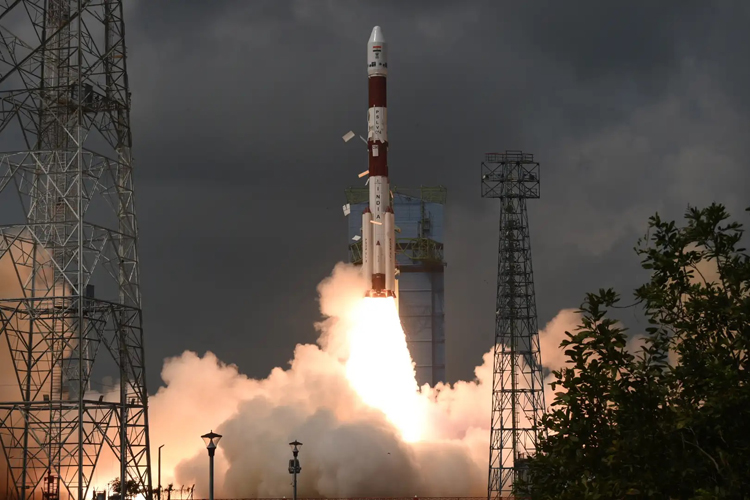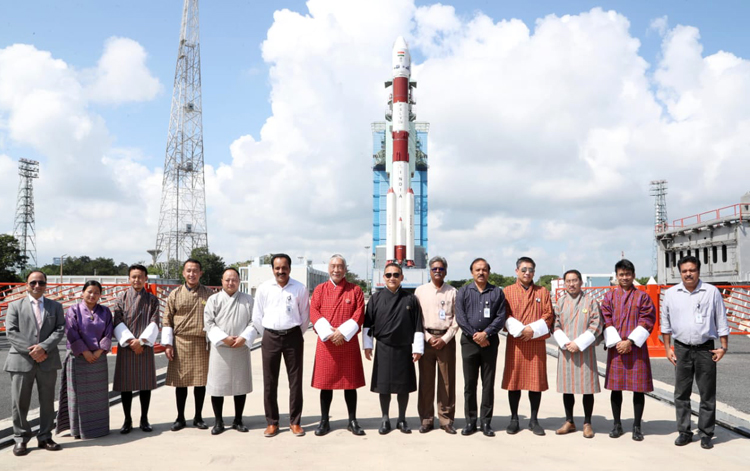INDIAN ARMED FORCES CHIEFS ON OUR RELENTLESS AND FOCUSED PUBLISHING EFFORTS

The insightful articles, inspiring narrations and analytical perspectives presented by the Editorial Team, establish an alluring connect with the reader. My compliments and best wishes to SP Guide Publications.

"Over the past 60 years, the growth of SP Guide Publications has mirrored the rising stature of Indian Navy. Its well-researched and informative magazines on Defence and Aerospace sector have served to shape an educated opinion of our military personnel, policy makers and the public alike. I wish SP's Publication team continued success, fair winds and following seas in all future endeavour!"

Since, its inception in 1964, SP Guide Publications has consistently demonstrated commitment to high-quality journalism in the aerospace and defence sectors, earning a well-deserved reputation as Asia's largest media house in this domain. I wish SP Guide Publications continued success in its pursuit of excellence.
- Prime Minister Modi Visits Punjab’s Adampur Air Base, Interacts with Airmen after Successful ‘Operation Sindoor’; Stern Message to Pakistan
- The layered Air Defence systems that worked superbly, the key element of Operation Sindoor
- Operation Sindoor | Day 2 DGMOs Briefing
- Operation Sindoor: Resolute yet Restrained
- India's Operation Sindoor Sends a Clear Message to Terror and the World – ‘ZERO TOLERANCE’
- Japan and India set forth a defence cooperation consultancy framework, talks on tank and jet engines
More Milestones in Space & Space Industry
The successful launch of the Vikram-S rocket has opened up a whole range of options since low cost rockets using 3-D engines and the use of carbon fibre can be used for military applications as well. Moreover, small satellites also permit loading them with multiple functionalities. We are now on the anvil of rapid and tactical space launch capabilities.
 |
The Author is Former Director General of Information Systems and A Special Forces Veteran, Indian Army |

On November 18, 2022, a new milestone was heralded with Indian startup Skyroot Aerospace initiating its journey to space by successfully launching its Vikram-S rocket. Skyroot Aerospace is the first Indian company to send a privately built rocket to space. The six metre long rocket that weighed more than 500 kg was sent into a sub-orbital mission carrying three payloads from Space Kidz India, N-Space Tech India and Bazoomq Armenia. An important feature was that the Vikram-S rocket was equipped with four 3D-printed engines and was made out of carbon fibre. The vehicle included a single-stage propulsion system that was powered by solid fuel.
The Vikram-S rocket took off from the Indian Space Research Organisation’s (ISRO’s) rocket launch pad in Sriharikota, Andhra Pradesh at about 11.30 am and was able to reach an altitude of 89.5 km and a range of 121.2 km before it safely splashed down in the Bay of Bengal. The total flight time of the vehicle was about 300 seconds. This successful mission will help Skyroot Aerospace to use such technologies that will be used in the next Vikram-1 orbital vehicle which will feature the country’s first “fully” 3D printed rocket engine. Skyroot founder-CEO Srinath Ravichandran told media, “We are targeting a launch by the end of December this year.” The rocket will be called ‘Agnibaan’ which will be launched through a mobile pedestal called ‘Dhanush’.
An important feature was that the Vikram-S rocket was equipped with four 3D-printed engines and was made out of carbon fibre
Union Science & Technology Minister Jitendra Singh witnessed the launch from ISRO’s launch pad. He remarked that this launch was “indeed a new beginning” for the Indian space program and noted that this is a “turning point in the Indian startup movement”. He also thanked Prime Minister Narendra Modi for opening the space sector for private participation. Skyroot Aerospace's CEO and Co-Founder, Pawan Kumar Chandana said that all the mission's objectives were achieved and that the mission was dedicated to the late Vikram Sarabhai, who is known as the father of the Indian space sector.

On November 25, 2022, Space-tech startup Agnikul Cosmos announced the opening of the first ‘private’ launch-pad at Sriharkota. The facility was inaugurated by ISRO Chairman S. Somnath. The facility has been designed by Agnikul Cosmos and has been executed with the support of ISRO and IN-SPACe. It will be operated by Agnikul Cosmos and has two sections; the Agnikul Launch Pad and the Agnikul Control Centre. All critical systems connecting these two sections are four km away to ensure no break in operations during the countdowns. The launch-pad is specially built keeping in mind the requirement to support launches as well as to monitor flight safety.
On November 26, 2022, the India-Bhutan SAT (INS-2B), was launched by ISRO’s Polar Satellite Launch Vehicle (PSLV), jointly developed by India and Bhutan, into space. The PSLV C54 carried the India-Bhutan SAT, along with India’s Earth Observation Satellite-06 and other satellites from Satish Dhawan Space Centre in Sriharikota, Andhra Pradesh. The satellite was built jointly by ISRO and engineers from the Department of Information Technology and Telecom (DITT) under the Information and Communications Ministry of Bhutan.
This launch was indeed a new beginning for the Indian space program and is a turning point in the Indian startup movement
India has been helping Bhutanese engineers by providing training in satellite building and testing, as well as processing and analysing satellite data at the UR Rao Satellite Centre in Bengaluru. A high-level team from Bhutan headed by Lyonpo Karma Donnen Wangdi, Minister of Information and Communications of Bhutan, witnessed the launch of the India-Bhutan SAT from the launch pad in Sriharikota.
The successful launch of the India-Bhutan SAT was praised by Prime Minister Narendra Modi by tweeting, “The India-Bhutan satellite is proof of our unique friendship with the Bhutanese people. I applaud @dittbhutan and @isro for this jointly designed satellite’s successful launch. @PMBhutan”. Modi praised the Department of Information Technology and Telecom (DITT) Bhutan and ISRO for the successful launch of this jointly developed satellite and stated that the India-Bhutan satellite is a testament to our unique relationship with the people of Bhutan.

Bhutan’s Prime Minister Lotay Tsering tweeted a message from the King of Bhutan which read: “The launch of India-Bhutan SAT today is a historic milestone in the exemplary and enduring friendship between Bhutan and India. The development and launch of the satellite marks a new era in the relations between our two nations, extending to the frontiers of space. It is an endevour befitting our time, showcasing modern India’s technological and scientific capabilities and reflecting Bhutan’s aspirations. I convey our deepest appreciation to the Government of India and ISRO for the support extended to the project from its inception to its realization and launch. I also congratulate the team and all those who have been involved in this worthwhile endevour.”
ISRO has been assisting private companies in the country by offering its facilities for testing and launching rockets as well as satellites
ISRO provided the integration facility, launch-pad, range communications and tracking support before and during the Vikram-S launch. ISRO has been assisting private companies to end the space monopoly in the country by offering its facilities for testing and launching rockets as well as satellites that are made by private companies and the establishment of IN-SPACe has been a major boost for the space programs of India.

Significantly, the successful launch of the Vikram-S rocket has opened up a whole range of options altogether, especially since such low cost rockets using 3-D engines and the use of carbon fibre can be used for military applications as well. The production of small launch vehicles can increase overtime, allowing them to be launched in large numbers and in quick time. Moreover, small satellites also permit loading them with multiple functionalities. We are now on the anvil of rapid and tactical space launch capabilities.
The US Space Force is already awarding commercial contracts for executing ‘responsive’ space missions. In any conflict, or preceding it, China is sure to target our military satellites. We need to work on a full-fledged plan for replacing satellites in the event of these being damagedin quick time using the Vikram-S/Agnibaan capability. At the same time, their mass employment, including catering for redundancies, is must to ensure 24x7 surveillance astride our borders to obviate what happened in Eastern Ladakh during 2020, not only did the move forward of China’s Peoples’ Liberation Army’s (PLA’s) motorised divisions from Aksai Chin surprise us, construction of a new road by the PLA 5-km short of Galwan also went unnoticed.





